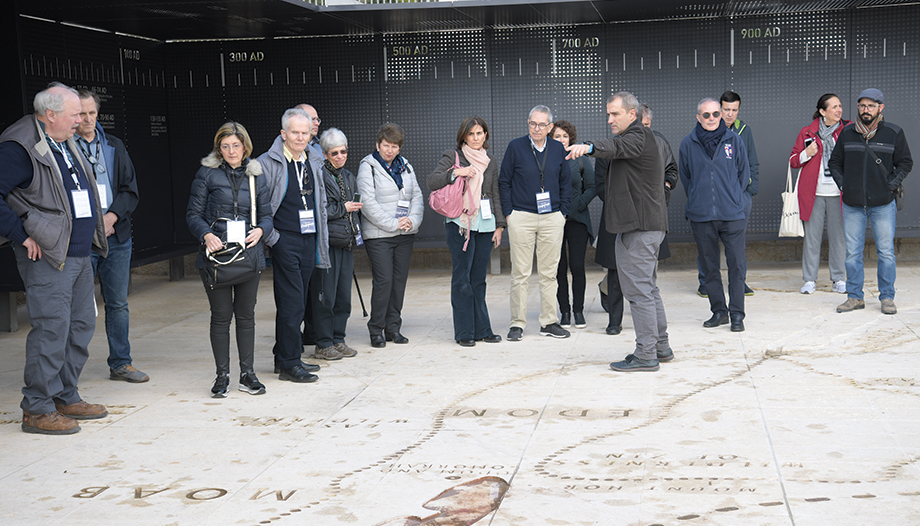How did the idea of the Holy Land Dialogues?
-Alvaro del Portillo wanted to bring the Holy Land closer to many people and to promote the aspiration for peace. The project Saxum tries to materialize this desire. That is why in the Holy Land Dialogues (HLD) is intended to facilitate dialogue between cultures. It is a project that wants to join so many initiatives that make known the land where Jesus Christ was born, some of them with centuries of presence in the region.
They have the added attraction of taking place in the place where Jesus lived, as well as being a place where different faiths converge, each with its origins and common links. That is why every meeting held there is enveloped in an atmosphere that invites dialogue.
The synergy between the visits to the Holy Places and the cultural dimension contributes to a broader vision of the different ways of thinking and approaching the religious reality.
What were the topics covered in editions prior to 2020?
-The first edition was held in November 2016. Some 400 people from some thirty countries participated, and the theme was. Promoting peace and understanding. Issues such as the impact of Judeo-Christian thought on science and art, personal transformation at the Holy Places from primitive times to the present day and the culture of encounter were addressed. Keynote speakers included Israel's Minister of Tourism, Yariv Levin, Andrew Briggs, professor at Oxford University, and Eric Cohen, executive director of Tikva Fund.
The second edition, which took place in February 2018, brought together some 200 people from some twenty countries. The keynote speakers were Melanie Phillips, who spoke on the defense of the West through the Hebrew Bible, and Russell Ronald Reno, who spoke on Jerusalem as holiness incarnate.
What type of people participate in HLDs?
-The first edition was mainly attended by benefactors of the project. Saxum. The project then spread like the ripples of a stone thrown into the lake, especially among friends and acquaintances. It should not be forgotten that those who go on pilgrimage to the Holy Land live a unique experience, which they wish to share with others and to repeat personally. Thus, the Friends of Saxum We hope that there will be many pilgrims from all over the world who share the same mission, and that their stay will be a source of interior renewal.
The 2020 edition has had a clear interfaith character. Is this a defining feature of the HLD?
-The Holy Land is a unique geographical space where the customs and history of Christians, Jews and Muslims coexist. HLD seeks to integrate into this complex reality, in which Christians are called to be like leaven in the promotion of peace.
This is why the interreligious and intercultural dimension is a defining feature of the HLD. It adds a new factor to the pilgrimage and makes it complementary. For Christians, the religiosity in the air, the visits to the Holy Places and the cultural activities contribute to many people returning home with a more lively faith and a deeper understanding of their cultural roots.
What is the Saxum Visitor Center?
-The Saxum Visitor Center - Emmaus Road is located 12 kilometers from Jerusalem, on the road to Emmaus-Nicopolis. It is an interpretive center that helps visitors learn about the land of Jesus Christ. Through multimedia resources, such as touch screens, models and maps, pilgrims gain a better understanding of the Holy Places they have visited or are about to visit.
It also includes a timeline that combines the dates of the history of human civilization with those of the Old Testament.
It also has a chapel with a capacity of 80 people, where pilgrims can celebrate Holy Mass, with confessionals at their disposal. It also has a large terrace overlooking the valley and a cafeteria where visitors can rest.
From this center you can walk the last 18 kilometers of the road to Emmaus. It is a way to relive the scene recounted in the Gospel of Luke, according to which on Easter Sunday Jesus appeared to two disciples coming from Jerusalem, who, disappointed as they were because of the Lord's absence, they finally recognized him in the breaking of the bread.












